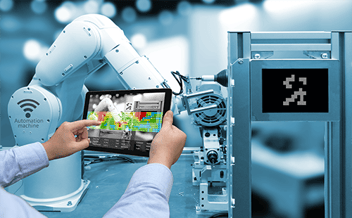

Optimising connected electric vehicles
The future for electric vehicles has never looked brighter. EVs already make up 14% of total automobile sales worldwide. And around the world, an increasing number of regulators are putting plans in place to phase out vehicles that run on fossil fuels in favour of electric vehicles. Consumers are on board as well, with one in four U.K. residents planning to purchase an EV in the next five years.
For these reasons, the eventual adoption of connected electric vehicles seems inevitable. In this article, we're going to be exploring the future of connected EVs, including their challenges, so that you can better understand the market.
What are connected electric vehicles?
Connected electric vehicles are EVs that can communicate with one another and specific stations via a network. While this technology is limited right now, electric vehicles will likely adopt this technology for a variety of reasons which we’ll touch on in a minute.
The connectivity between electric vehicles can be made possible with the Internet of Things. These connectivity solutions can provide low-power, low-traffic smart mobility on a global scale. You can use IoT connectivity to solve various challenges surrounding electric vehicles, make them safer to drive, and bring about the future of self-driving vehicles sooner.
Deployment challenges for electric vehicles
Deploying electric vehicles comes with some challenges. With their increasing popularity, we'll see the pressure from these challenges increase, making the need for a solution increasingly important.
Below are some of the key challenges facing EVs.
Charging times and compatibility
Electric vehicles take a long time to charge. Not only that, but because different manufacturers and regions use different charging standards, it can also be difficult for drivers to find a charging station that supports their vehicle.
These two features can create a shortage of available charging stations, even as the number of charging stations increases. Either charging speeds or the number of charging stations will need to be increased to tackle this problem.
Lack of charging infrastructure
Compounding these challenges is a lack of EV infrastructure. This is a natural result of how new electric vehicles are. There hasn't been enough time or high enough adoption levels to justify widespread infrastructure as we see with petrol stations.
This can make it hard to find available charging stations for drivers, and it can also reduce their confidence that they will be able to find a station before their vehicle runs out of charge. This can limit how often or far people drive their EVs. And if people are worried about running out of range, they’re less likely to purchase an EV in the first place.
High vehicle costs
Electric vehicles are still quite expensive for the average consumer. It will take some time before EV components begin to drop in price and mass production takes over.
In the meantime, there are large segments of the global market for whom an electric vehicle is out of the question based on their driving habits, lack of infrastructure support, and high costs.
How IoT can handle these challenges
Fortunately, IoT can make help fix some of these electric vehicle challenges. Here are some of the ways that IoT can serve as a solution for the EV market's greatest stumbling blocks.
Make charging stations smart
IoT can help make electric vehicle charging stations smarter. Smart charging stations can communicate with vehicles to let drivers know if they have availability, how long before a space is available, and what compatibility they offer for EVs.
Manage maintenance demands with sensors
Electric vehicles have unique maintenance demands that you can address using IoT sensors. By attaching sensors throughout the vehicle's components (just like in traditional automobiles today), drivers and dealers can receive smart updates on a vehicle's maintenance needs. This helps both drivers and EV companies stay on top of maintenance.
Improve battery management
Electric vehicles can also rely on IoT to improve battery management. Driving tips such as speed management, knowing when to stop and charge before going on a long drive, and otherwise optimising battery life can go a long way towards keeping drivers safe and charged.
And for EV companies or companies with EV fleets, IoT sensors can give you better insight into the real-life battery range of your vehicles. This helps you understand how best to use EVs to address your needs.
The future of electric vehicles
Despite looming challenges, the future for electric vehicles is bright. Manufacturers are quickly making strides, self-driving features are on the way, and technological advances are set to significantly reduce costs.
For more information on the future of electric vehicles and how IoT can help you optimise them, please reach out to our team by filling out the form below.
Speak to a Velos IoT expert
Related articles


Real Time Managed IoT Connectivity Platform
Take full control of IoT devices with a managed IoT connectivity platform that empowers you with...

How to use actionable insights to optimise Industrial IoT Businesses
Optimisation is becoming an increasingly pressing objective for all businesses, including...